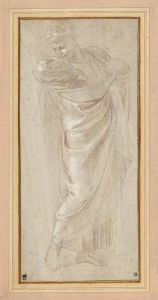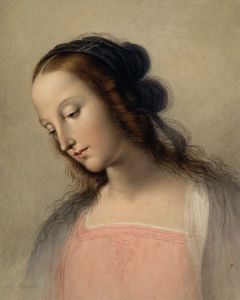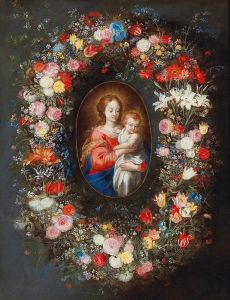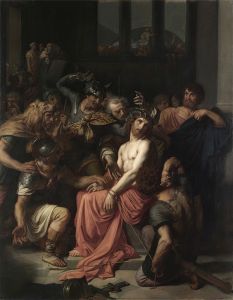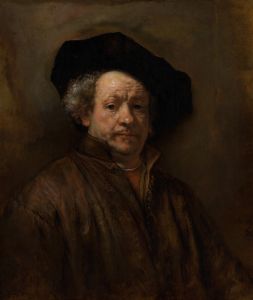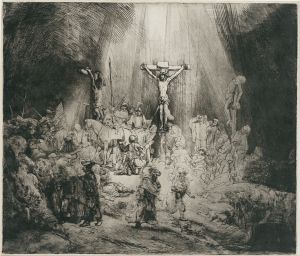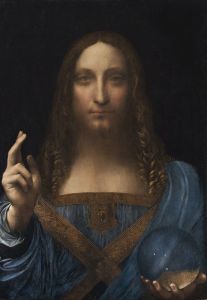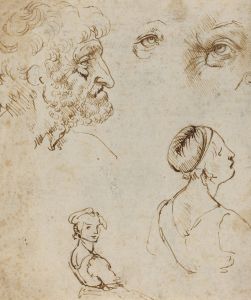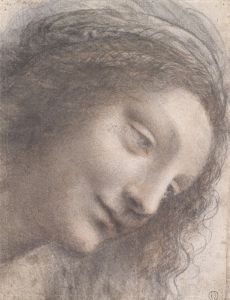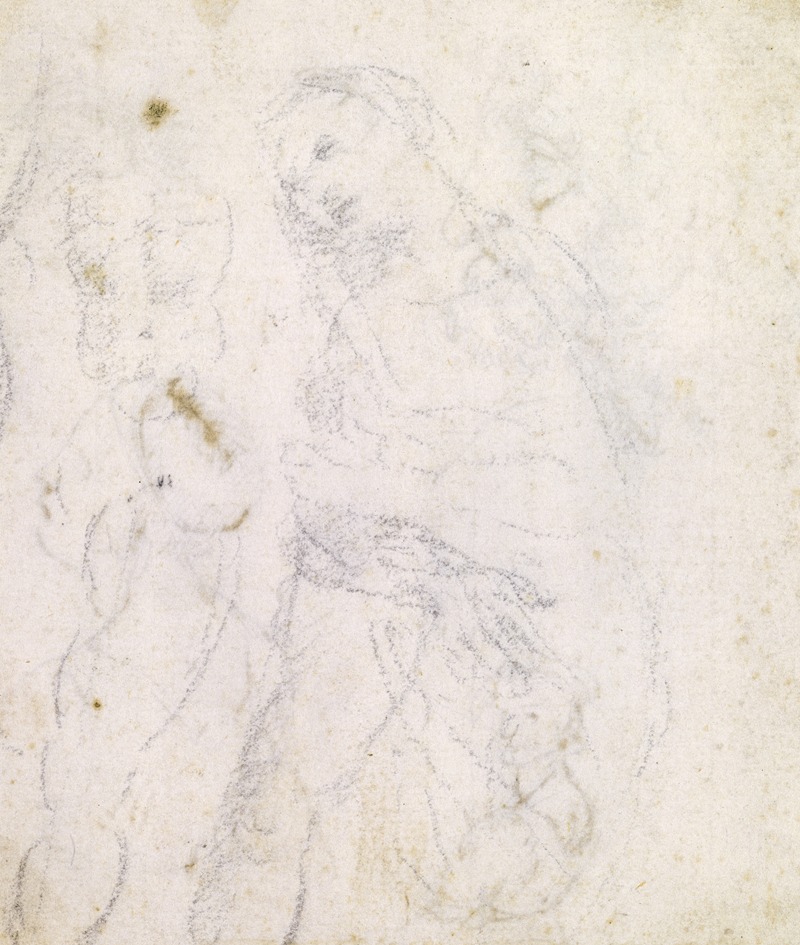
Study of a Madonna
A hand-painted replica of Leonardo da Vinci’s masterpiece Study of a Madonna, meticulously crafted by professional artists to capture the true essence of the original. Each piece is created with museum-quality canvas and rare mineral pigments, carefully painted by experienced artists with delicate brushstrokes and rich, layered colors to perfectly recreate the texture of the original artwork. Unlike machine-printed reproductions, this hand-painted version brings the painting to life, infused with the artist’s emotions and skill in every stroke. Whether for personal collection or home decoration, it instantly elevates the artistic atmosphere of any space.
"Study of a Madonna" is a drawing attributed to the renowned Italian Renaissance artist Leonardo da Vinci. Leonardo, born in 1452, is celebrated for his contributions to art, science, and engineering, and is often regarded as one of the most diversely talented individuals in history. His works are characterized by their detailed observation of nature, innovative techniques, and profound understanding of human anatomy and emotion.
The drawing "Study of a Madonna" is believed to be one of Leonardo's preparatory sketches, which he often created as part of his meticulous process of developing larger, more complex compositions. These studies allowed him to explore different poses, expressions, and compositions before committing to a final piece. Leonardo's sketches are highly valued for their insight into his creative process and his ability to capture the subtleties of human form and emotion with minimal lines.
Leonardo's depictions of the Madonna, or the Virgin Mary, are significant in his oeuvre, as they reflect both his artistic skill and his engagement with religious themes, which were central to the art of the Renaissance. The Madonna was a popular subject during this period, symbolizing purity, grace, and maternal love. Leonardo's interpretations of the Madonna often emphasize her humanity and tenderness, qualities that were innovative at the time and contributed to the evolving portrayal of religious figures in art.
The "Study of a Madonna" showcases Leonardo's characteristic use of sfumato, a technique that involves the delicate blending of tones and colors to create a soft transition between light and shadow. This technique is evident in many of his works, including the famous "Mona Lisa" and "The Virgin of the Rocks." In his drawings, Leonardo employed sfumato to give a sense of depth and volume, enhancing the lifelike quality of his figures.
Leonardo's drawings, including "Study of a Madonna," are typically executed in pen and ink, chalk, or metalpoint on paper. These materials allowed him to achieve a range of effects, from precise lines to subtle shading. His mastery of these techniques is evident in the fluidity and expressiveness of his sketches, which continue to be studied and admired by artists and scholars alike.
The exact date of "Study of a Madonna" is not definitively known, as is the case with many of Leonardo's drawings. However, it is generally believed to have been created during the late 15th century, a period when Leonardo was actively engaged in exploring religious themes and developing his distinctive artistic style.
Today, Leonardo's drawings are housed in various collections around the world, including the Royal Collection at Windsor Castle, the Louvre Museum in Paris, and the Biblioteca Ambrosiana in Milan. These collections preserve his legacy and provide valuable insights into the mind of one of history's greatest artists.
In conclusion, "Study of a Madonna" exemplifies Leonardo da Vinci's exceptional skill in drawing and his innovative approach to traditional religious subjects. Through his studies, Leonardo not only prepared for his larger works but also contributed to the broader development of Renaissance art, leaving an indelible mark on the history of art.





